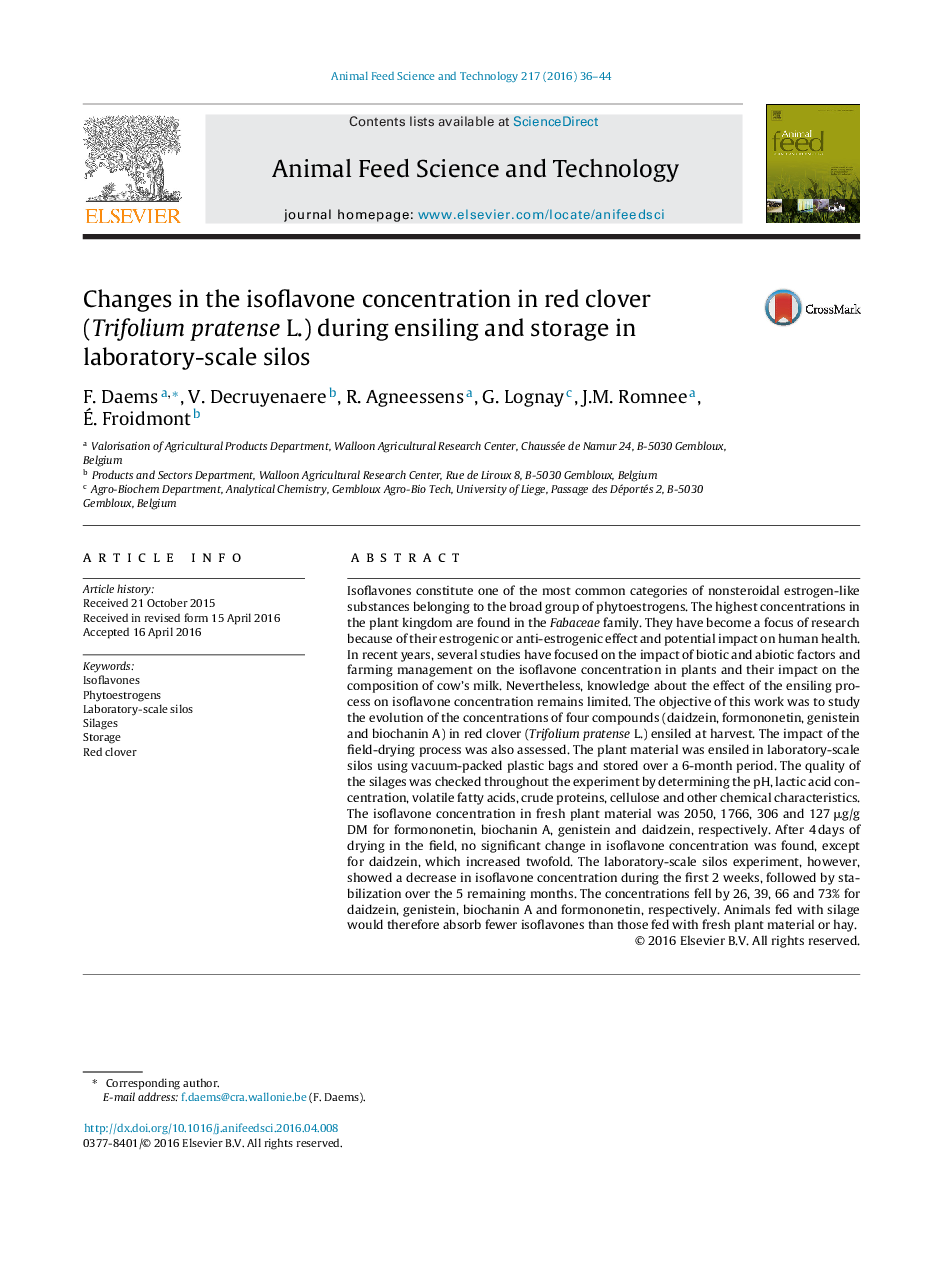| کد مقاله | کد نشریه | سال انتشار | مقاله انگلیسی | نسخه تمام متن |
|---|---|---|---|---|
| 2419276 | 1552368 | 2016 | 9 صفحه PDF | دانلود رایگان |

• Effect of ensiling process on isoflavone concentration in red clover was investigated.
• Vacuum-packing systems are good laboratory-scale silos for studying clover silage.
• Pre-wilting increased the concentration of daidzein.
• Isoflavones concentration decreased during the first two weeks of the ensiling process.
Isoflavones constitute one of the most common categories of nonsteroidal estrogen-like substances belonging to the broad group of phytoestrogens. The highest concentrations in the plant kingdom are found in the Fabaceae family. They have become a focus of research because of their estrogenic or anti-estrogenic effect and potential impact on human health. In recent years, several studies have focused on the impact of biotic and abiotic factors and farming management on the isoflavone concentration in plants and their impact on the composition of cow’s milk. Nevertheless, knowledge about the effect of the ensiling process on isoflavone concentration remains limited. The objective of this work was to study the evolution of the concentrations of four compounds (daidzein, formononetin, genistein and biochanin A) in red clover (Trifolium pratense L.) ensiled at harvest. The impact of the field-drying process was also assessed. The plant material was ensiled in laboratory‐scale silos using vacuum-packed plastic bags and stored over a 6-month period. The quality of the silages was checked throughout the experiment by determining the pH, lactic acid concentration, volatile fatty acids, crude proteins, cellulose and other chemical characteristics. The isoflavone concentration in fresh plant material was 2050, 1766, 306 and 127 μg/g DM for formononetin, biochanin A, genistein and daidzein, respectively. After 4 days of drying in the field, no significant change in isoflavone concentration was found, except for daidzein, which increased twofold. The laboratory-scale silos experiment, however, showed a decrease in isoflavone concentration during the first 2 weeks, followed by stabilization over the 5 remaining months. The concentrations fell by 26, 39, 66 and 73% for daidzein, genistein, biochanin A and formononetin, respectively. Animals fed with silage would therefore absorb fewer isoflavones than those fed with fresh plant material or hay.
Journal: Animal Feed Science and Technology - Volume 217, July 2016, Pages 36–44